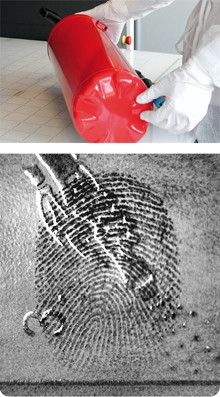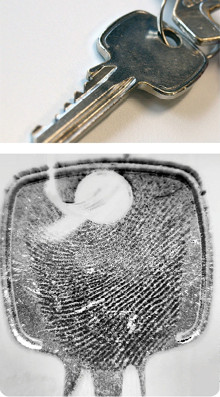
EXTINGUISHER
Steel
5 Minutes

KEY
Aluminum
2 Minutes

KNIFE BLADE
Steel
4 Minutes
Metals have various unique properties such as their typical luster and mostly silvery or greyish appearance. They naturally have a reflective surface and are good conductors of both heat and electricity. Additionally, because they are malleable, they can be deformed with little risk to break. Therefore, due to their characteristic strength and ductility, metals are hugely versatile materials and used for a wide range of man-made artefacts. For example, components of weapons are to a large extent made of steel, stainless steel or other alloys, including blades or guns. Eventually, latent prints left on the murder weapon can help to identify a suspect.
The heat conducting abilities of metals have a positive effect on the examination with EVISCAN: because infrared light sources are used, EVISCAN mostly obtains a high contrast between substrate and latent print. Yet, the quality of an analyzed print depends on the material surface, e. g. whether it is polished or treated. For example guns often are blued in an oxidizing chemical process to prevent them from rust and corrosion which is a disadvantage from the perspective of latent print detection.



